Themed collection How does it work? – a collection on mechanistic studies

Elemental sulphur in the synthesis of sulphur-containing polymers: reaction mechanisms and green prospects
The synthesis of polymers using elemental sulphur as a reagent has been studied in relation to the worldwide overproduction of cyclo-octasulphur.
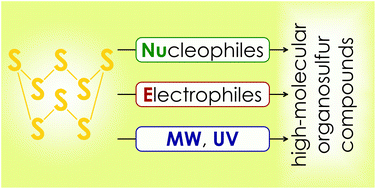
RSC Adv., 2021,11, 9008-9020
https://doi.org/10.1039/D0RA10507D
New protocols to access imidazoles and their ring fused analogues: synthesis from N-propargylamines
Imidazole and its derivatives are privileged N-heterocyclic structures present in various natural products and synthetic pharmaceuticals.
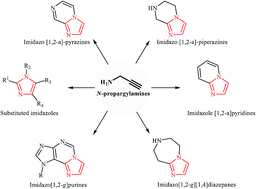
RSC Adv., 2017,7, 7079-7091
https://doi.org/10.1039/C6RA25816F
What do we know about multicomponent reactions? Mechanisms and trends for the Biginelli, Hantzsch, Mannich, Passerini and Ugi MCRs
The current manuscript describes the importance, mechanism propositions, evidence and controversies associated with multicomponent reactions (MCRs).
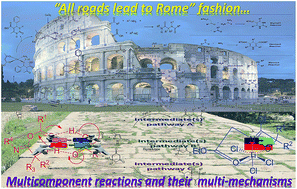
RSC Adv., 2014,4, 54282-54299
https://doi.org/10.1039/C4RA10651B
Recent advances in transition-metal-catalyzed C–CN bond activations
Recent advances in transition-metal-catalyzed C–CN bond activation, leading to a lot of important approaches such as cyanofunctionalization, cross-coupling and cyanation, are reviewed.
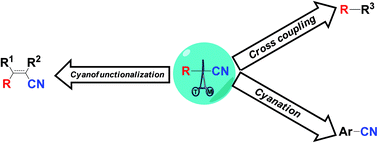
RSC Adv., 2014,4, 47806-47826
https://doi.org/10.1039/C4RA08675A
Stereoselective Z-halosulfonylation of terminal alkynes using sulfonohydrazides and CuX (X = Cl, Br, I)
The unconventional Z-selective halosulfonylation of terminal alkynes has been achieved by using CuX (X = Cl, Br, I)/sulfonohydrazides at rt, providing a practical and new route for the synthesis of diverse halogenated vinyl sulfones.
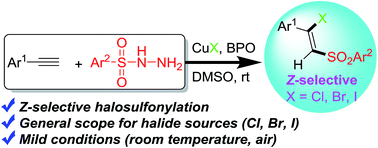
RSC Adv., 2016,6, 73132-73135
https://doi.org/10.1039/C6RA13737G
In the searching for zwitterionic intermediates on reaction paths of [3 + 2] cycloaddition reactions between 2,2,4,4-tetramethyl-3-thiocyclobutanone S-methylide and polymerizable olefins
DFT calculations show that the [3 + 2]-cycloaddition of 2,2,4,4-tetramethyl-3-thiocyclobutanone S-methylide with nitroethene takes place according to a polar, two-step mechanism with a zwitterionic intermediate.
![Graphical abstract: In the searching for zwitterionic intermediates on reaction paths of [3 + 2] cycloaddition reactions between 2,2,4,4-tetramethyl-3-thiocyclobutanone S-methylide and polymerizable olefins](/en/Image/Get?imageInfo.ImageType=GA&imageInfo.ImageIdentifier.ManuscriptID=C5RA20747A&imageInfo.ImageIdentifier.Year=2015)
RSC Adv., 2015,5, 101045-101048
https://doi.org/10.1039/C5RA20747A
A silver-initiated free-radical intermolecular hydrophosphinylation of unactivated alkenes
A scalable, operationally easy intermolecular hydrophosphinylation of various unactivated alkenes with H–P(O) compounds via an Ag(I)-initiated free radical process was developed. Mechanistic studies suggest that atom transfer processes were involved in this system.

RSC Adv., 2015,5, 27853-27856
https://doi.org/10.1039/C5RA04136H
Divergent reaction: metal & oxidant free direct C–H aryloxylation and hydride free formal reductive N-benzylation of N-heterocycles
Metal, oxidant and other additive-free novel methods for direct C–H aryloxylation of aliphatic amines are developed. Divergent reaction for the synthesis of ring-fused oxazine and arylmethylamine is developed.

RSC Adv., 2014,4, 46214-46217
https://doi.org/10.1039/C4RA05045B
Understanding the different reactivity of (Z)- and (E)-β-nitrostyrenes in [3+2] cycloaddition reactions. An MEDT study
The different reactivity and selectivities of isomeric E/Z β-nitrostyrenes in polar zw-type [3+2] cycloaddition reactions is explained within MEDT.
![Graphical abstract: Understanding the different reactivity of (Z)- and (E)-β-nitrostyrenes in [3+2] cycloaddition reactions. An MEDT study](/en/Image/Get?imageInfo.ImageType=GA&imageInfo.ImageIdentifier.ManuscriptID=D1RA00891A&imageInfo.ImageIdentifier.Year=2021)
RSC Adv., 2021,11, 9698-9708
https://doi.org/10.1039/D1RA00891A
Azo synthesis meets molecular iodine catalysis
An innovative metal-free oxidative protocol for azo compound formation catalyzed by substoichiometric amounts of molecular iodine (2 mol%) is disclosed.

RSC Adv., 2021,11, 7251-7256
https://doi.org/10.1039/D1RA00369K
DFT and AFIR study on the copper(I)-catalyzed mechanism of 5-enamine-trisubstituted-1,2,3-triazole synthesis via C–N cross-coupling and the origin of ring-opening of 2H-azirines
The Cu(I)-catalyzed mechanism of 5-enamined-functionalized fully substituted 1,2,3-triazole synthesis was rationalized by interrupted copper(I)-catalyzed terminal alkynes and organic azides click reaction (CuAAC).

RSC Adv., 2021,11, 2744-2755
https://doi.org/10.1039/D0RA07498E
Iodine-mediated formal [3 + 2] annulation for synthesis of furocoumarin from oxime esters
A novel synthesis of furocoumarins was developed by a reaction between oxime esters and 4-hydroxycoumarins.
![Graphical abstract: Iodine-mediated formal [3 + 2] annulation for synthesis of furocoumarin from oxime esters](/en/Image/Get?imageInfo.ImageType=GA&imageInfo.ImageIdentifier.ManuscriptID=D0RA07566C&imageInfo.ImageIdentifier.Year=2020)
RSC Adv., 2020,10, 44332-44338
https://doi.org/10.1039/D0RA07566C
A study on the selective catalytic reduction of NOx by ammonia on sulphated iron-based catalysts
The roles of Fe3+ and SO42− are different at low and high temperatures due to their interaction. It is the appropriate contents of Fe3+ and SO42− that can result in high NH3-SCR activity at varying temperatures.
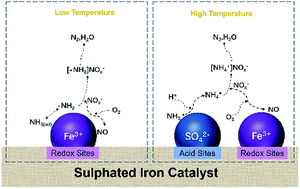
RSC Adv., 2020,10, 40948-40959
https://doi.org/10.1039/D0RA06697D
Ru(II)-catalyzed C6-selective C–H acylmethylation of pyridones using sulfoxonium ylides as carbene precursors
In this study, we describe a method using sulfoxonium ylides as carbene precursors to achieve C6-selective acylmethylation of pyridones catalyzed by a ruthenium(II) complex.

RSC Adv., 2020,10, 6351-6355
https://doi.org/10.1039/C9RA10749E
UV light promoted ‘Metal’/‘Additive’-free oxidation of alcohols: investigating the role of alcohols as electron donors
The present study demonstrates the important role of alcohols themselves as electron donors for their oxidative transformations to the corresponding carbonyl compounds in the absence of any metal/oxidant and external photosensitizer.
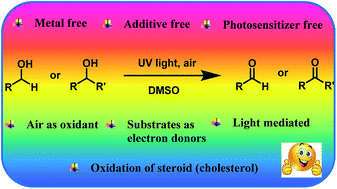
RSC Adv., 2019,9, 36198-36203
https://doi.org/10.1039/C9RA06490G
Tuning the Biginelli reaction mechanism by the ionic liquid effect: the combined role of supported heteropolyacid derivatives and acidic strength
Heteropolyacids and ionic liquid effect allowed tuning of the Biginelli reaction mechanism and synthesis of 3,4-dihydropyrimidin-2(1H)-one/thione derivatives in an efficient, recyclable fashion. The role of acidic strength and supported heteropolyacid is disclosed.
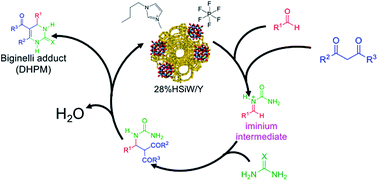
RSC Adv., 2019,9, 27125-27135
https://doi.org/10.1039/C9RA03336J
Metal-free hypervalent iodine/TEMPO mediated oxidation of amines and mechanistic insight into the reaction pathways
A highly efficient, metal free rapid protocol studied mechanistically the oxidation of primary and secondary amines to their corresponding carbonyl compounds using PhI(OAc)2 and catalytic TEMPO to provide diverse products in excellent yields.

RSC Adv., 2018,8, 32055-32062
https://doi.org/10.1039/C8RA07451H
Diasteroselective multi-component assemblies from dynamic covalent imine condensation and metal-coordination chemistry: mechanism and narcissistic stereochemistry self-sorting
Enantio narcissistic self-assembly is observed in a multi-metallic structure used as stereodynamic probe for CD measurements.
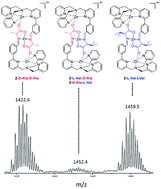
RSC Adv., 2018,8, 19494-19498
https://doi.org/10.1039/C8RA03989E
Understanding the mechanism and regioselectivity of the copper(I) catalyzed [3 + 2] cycloaddition reaction between azide and alkyne: a systematic DFT study
Analysis of the global and local electrophilicity/nucleophilicity indices allows correct explanation of the behaviors of the copper(i) catalyzed 32CA reaction.
![Graphical abstract: Understanding the mechanism and regioselectivity of the copper(i) catalyzed [3 + 2] cycloaddition reaction between azide and alkyne: a systematic DFT study](/en/Image/Get?imageInfo.ImageType=GA&imageInfo.ImageIdentifier.ManuscriptID=C7RA10653J&imageInfo.ImageIdentifier.Year=2018)
RSC Adv., 2018,8, 7670-7678
https://doi.org/10.1039/C7RA10653J
The synthesis and mechanistic studies of a highly active nickel phosphide catalyst for naphthalene hydrodearomatization
NixP–Al-M catalysts were synthesized with different Ni/P molar ratios and loadings, which displayed high HDA activity and decalin selectivity.

RSC Adv., 2017,7, 8677-8687
https://doi.org/10.1039/C7RA00250E
Mechanistic insight into the selective olefin-directed oxidative carbocyclization and borylation by a palladium catalyst: a theoretical study
Lowering the polarity of the solvent disfavors the olefin insertion step and the formation of cyclobuteneboron product.

RSC Adv., 2017,7, 5013-5018
https://doi.org/10.1039/C6RA27752G
Selective oxidation of organic sulfides to sulfoxides using sugar derived cis-dioxo molybdenum(VI) complexes: kinetic and mechanistic studies
Six cis-dioxo molybdenum(VI) complexes of D-glucose derived ligands have been applied as catalysts for the selective transformation of organic sulfides to sulfoxides, and kinetics as well as mechanistic aspects of this reaction have been explored.
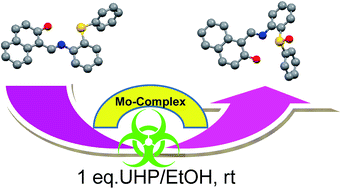
RSC Adv., 2016,6, 28015-28022
https://doi.org/10.1039/C6RA01087C
TBAI/TBHP-catalyzed [3 + 2]cycloaddition/oxidation/aromatization cascade and online ESI-MS mechanistic studies: synthesis of pyrrolo[2,1-a]isoquinolines and indolizino[8,7-b]indoles
A facile [3 + 2]cycloaddition/oxidation/aromatization cascade reaction for the synthesis of pyrrolo[2,1-a]isoquinolines and indolizino[8,7-b]indoles has been developed by employing tert-butyl hydroperoxide (TBHP) and tetrabutylammonium iodide (TBAI).
![Graphical abstract: TBAI/TBHP-catalyzed [3 + 2]cycloaddition/oxidation/aromatization cascade and online ESI-MS mechanistic studies: synthesis of pyrrolo[2,1-a]isoquinolines and indolizino[8,7-b]indoles](/en/Image/Get?imageInfo.ImageType=GA&imageInfo.ImageIdentifier.ManuscriptID=C5RA24629F&imageInfo.ImageIdentifier.Year=2016)
RSC Adv., 2016,6, 2671-2677
https://doi.org/10.1039/C5RA24629F
Ammonium persulfate activated DMSO as a one-carbon synthon for the synthesis of methylenebisamides and other applications
Activation of DMSO to work as an economical and environmentally benign one-carbon synthon has been achieved by using a bench-top reagent ammonium persulfate for general and efficient access to symmetrical methylenebisamides from primary amides.
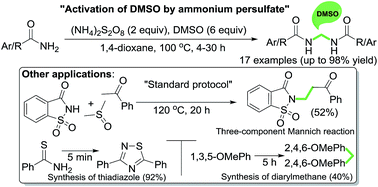
RSC Adv., 2015,5, 101641-101646
https://doi.org/10.1039/C5RA21801B
First report of the application of simple molecular complexes as organo-catalysts for Knoevenagel condensation
A series of molecular complexes have been designed, synthesized and used as organo-catalysts for the first time for very efficient Knoevenagel condensation.
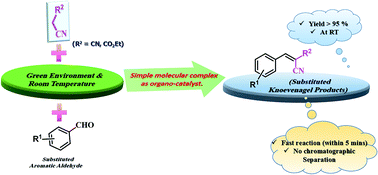
RSC Adv., 2015,5, 65526-65531
https://doi.org/10.1039/C5RA09036A
About this collection
We are very pleased to present our 10th Anniversary collection: How does it work? – a collection on mechanistic studies!
Looking back over the last 10 years, we would like to showcase some of the very best articles that have been published in RSC Advances. Many of these papers have been cited hundreds of times, providing valuable advances for further research, and some continue to be among the journal’s most downloaded articles as of today.
We hope you enjoy our 10th Anniversary collection: How does it work? – a collection on mechanistic studies!